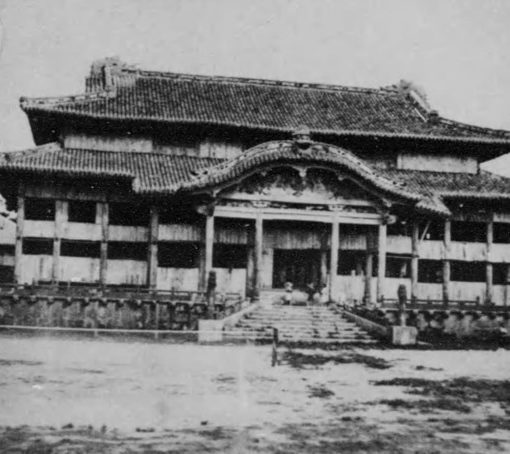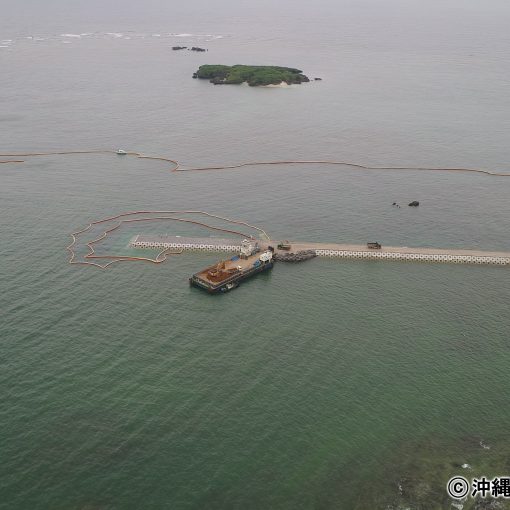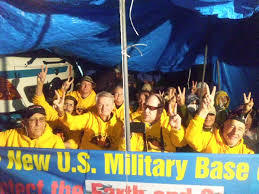March 27, 2020 Ryukyu Shimpo
Reject all things that beget war.
The tragedy that took the precious lives and wealth of Okinawans must not be forgotten, but passed on. We must renew this promise, to ensure peace in Okinawa.
The Battle of Okinawa began at the end of March in 1945, in which 20 million Japanese and Americans lost their lives.
The U.S. military landed in Zamami Village on March 26, 1945, and in Tokashiki Village on March 27, taking the island groups administered by both villages.
Coming under U.S. fire, approximately 500 locals committed “shudan jiketsu” (compulsory mass suicide) as coerced and instructed by the Imperial Japanese Army.
Indeed, the most tragic event in the Battle of Okinawa happened in the early stages of the battle.
The strategy of the Imperial Army was to draw out the war, as to stall what would have been a decisive battle fought on the main islands of Japan.
This strategy came at a tremendous cost to Okinawans.
What Okinawans learned from the Battle of Okinawa is that the military does not protect the lives of the local population.
Their experiences left the islanders with this lesson: the military and local civilians are at opposing ends from one another.
For Okinawans seeking peace, these lessons underlie their quest.
However, there has been a movement to deny these accounts, which should not be glossed over.
In 2006, during the government’s authorization review of school textbooks, comments were made to obfuscate the Imperial Army’s “coercion and involvement” in the mass suicides, distorting the description of these events.
After Okinawans protested, some of the original articulation was brought back.
Still, those comments made in the authorization review have yet to be retracted.
Ergo, every time the government reviews textbooks for authorization, we pay close attention to the descriptions of the Battle of Okinawa.
On March 24, the Ministry of Education, Culture, Sports, Science and Technology announced their authorization of school textbooks, which will be used in middle schools starting the 2021 school year.
Out of the seven publishers that received authorizations, six mentioned the “shudan-jiketsu” mass suicides in their history textbooks but sadly did not point out any coercion.
On the other hand, some textbooks offered “feature pages” dedicated to detailing the Battle of Okinawa.
While such efforts are commendable, we must continue to keep a watchful eye, to ensure no accounts are distorted.
The presence of the Japan Ground Self Defense Force in the Sakishima Islands also requires close attention, as it goes against the lessons we have learned from the Battle of Okinawa.
The JGSDF base on Miyakojima City received vehicles fitted with surface-to-ship missile launch pads, against local protests.
Meanwhile, the Ishigaki City Council passed a bill to sell city-owned land to the Okinawa Defense Bureau, ignoring the residents’ requests for a referendum to vote on hosting the JGSDF.
Neither actions respect public opinion.
In the year before the Battle of Okinawa, the presence of the Imperial Army meant forceful seizure of private lands and homes, and public facilities, including schools.
Furthermore, the Japanese Army was able to set up military camps and airfields by mobilizing all local residents.
The prefectural and municipal governments had begun to bear the earmarks of a wartime government.
The presence of the Japanese Army bases lead to the tragedy of the Battle of Okinawa.
Given this past, we must make judgments on the appropriateness of the JGSDF deployment to Ishigaki Island.
To grasp the current state of the prefecture and to decide our path forward, we must re-visit as many times as necessary the memories of the Battle of Okinawa—the genesis of post-war Okinawa.
This is the path to a peaceful future for our islands.
(English translation by T&CT and Monica Shingaki)





